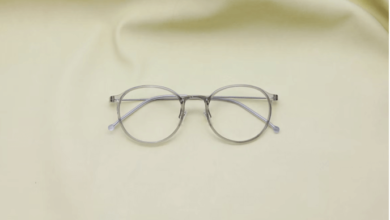Sheet Metal Bending: Techniques, Tools, and Applications

Introduction
Sheet metal bending is a vital manufacturing process used to shape metal sheets into specific angles and forms without altering their thickness. It is widely used in industries like automotive, aerospace, construction, and electronics to produce durable and precisely shaped components.
This process relies on applying force to the metal sheet to achieve the desired bend. With technological advancements, manufacturers now use computer-controlled machines (CNC), hydraulic presses, and advanced tooling to improve accuracy and efficiency. This article provides an in-depth look into sheet metal bending techniques, tools, applications, and challenges.
Understanding Sheet Metal Bending
Bending is a cold-forming process, meaning it does not require heating. The force applied to the sheet stretches the outer surface and compresses the inner surface until the metal takes the desired shape.
Key Factors Affecting Bending
Several factors influence the bending process, including:
- Material Type – Different metals, such as stainless steel, aluminum, and copper, react differently to bending forces.
- Sheet Thickness – Thicker materials require higher force and larger bend radii to avoid cracking.
- Bend Radius – The minimum radius needed to avoid fractures varies based on material properties.
- Springback – Some materials return slightly to their original shape after bending, requiring compensation in the design.
- Grain Direction – Bending parallel to the grain can cause cracks, while bending perpendicular provides better flexibility.
Understanding these factors is crucial for achieving precise and reliable bends.
Common Sheet Metal Bending Techniques
There are multiple bending methods, each offering different advantages depending on the application.
1. Air Bending
Air bending is a versatile and widely used method where the sheet is placed over a V-shaped die, and a punch presses down to create the bend. The sheet does not fully contact the die, allowing for flexible bend angles with a single tool.
Advantages:
- Requires less force than other methods.
- Allows for adjustable bending angles.
- Minimizes tool wear and extends tool life.
2. Bottoming
Also called bottom bending, this method forces the Sheet Metal Bending fully into the die, creating a precise bend angle. The amount of springback is reduced, making it more accurate than air bending.
Advantages:
- Provides high accuracy and consistency.
- Reduces the need for rework.
3. Coining
Coining is an intense force bending process where the punch and die create a permanent deformation in the sheet metal. This results in precise, repeatable bends with no springback.
Advantages:
- Produces highly accurate bends.
- Eliminates springback, reducing adjustments.
However, this method requires high-pressure machines, making it more expensive.
4. Roll Bending
Roll bending uses three rollers to gradually shape the metal into curved or cylindrical forms. It is commonly used in industries requiring rounded components like pipes, tanks, and enclosures.
Read also: The Power of an Online Business Coach for Female Entrepreneurs
Advantages:
- Creates large-radius bends efficiently.
- Suitable for thin and thick sheet metals.
5. Rotary Bending
In rotary bending, a rotating die applies force to bend the sheet metal without scratching or damaging the surface. This technique is ideal for delicate and pre-coated materials.
Advantages:
- Prevents surface defects and marks.
- Produces clean, smooth bends.
Essential Tools for Sheet Metal Bending
The success of the bending process depends on high-quality tools and machinery.
1. Press Brakes
Press brakes are hydraulic, mechanical, or CNC-controlled machines used for precise metal bending. They apply force using a punch and die setup. Modern CNC press brakes allow for automated programming and angle adjustments, improving efficiency.
2. Bending Dies
Different dies are used to achieve various bending angles and shapes, including:
- V-dies – Common for general bending.
- U-dies – Used for large-radius bends.
- Wipe dies – Create sharp bends with tight angles.
3. Roll Bending Machines
These machines use multiple rollers to gradually bend metal into curved shapes. They are ideal for making pipes, enclosures, and complex curved components.
4. Folding Machines
Folding machines use a clamping bar and a moving beam to bend sheet metal precisely. They are commonly used in HVAC duct manufacturing, enclosures, and panel production.
Applications of Sheet Metal Bending
The versatility of sheet metal bending makes it essential for multiple industries.
1. Automotive Industry
Manufacturers use bent sheet metal for car frames, engine components, brackets, and structural supports. The ability to create lightweight yet durable parts is crucial for vehicle performance.
2. Aerospace Industry
Aircraft require high-precision, lightweight metal parts. Sheet metal bending is used to manufacture airplane wings, fuselage components, and structural reinforcements.
3. Electronics and Appliances
Metal enclosures, casings, brackets, and frames for consumer electronics and home appliances are produced using sheet metal bending.
4. Construction and Architecture
Bending is used in roofing panels, staircases, metal doors, window frames, and HVAC ducting, ensuring both structural integrity and aesthetics.
5. Medical Equipment
Precision-bent metal is used for hospital beds, surgical instruments, and diagnostic machine enclosures, ensuring durability and hygiene.
Challenges in Sheet Metal Bending
Despite its many benefits, sheet metal bending comes with challenges that require careful planning and execution.
1. Springback Effect
Some materials return to their original shape after bending, requiring over-bending or compensation techniques to achieve accuracy.
2. Material Cracking
Brittle metals may develop cracks along the bend line, leading to defects. Choosing the correct grain direction and bend radius helps prevent this issue.
3. Inconsistent Thickness
Variations in material thickness can lead to uneven bends, reducing product quality. Ensuring uniform material thickness is essential.
4. Tool Wear and Maintenance
Bending tools experience wear over time, affecting precision and efficiency. Regular maintenance and timely replacements are necessary.
Advancements in Sheet Metal Bending
Modern technology has improved bending processes, making them more efficient, accurate, and automated.
1. CNC-Controlled Bending
CNC (Computer Numerical Control) bending automates angle adjustments and ensures high repeatability, reducing human errors and increasing productivity.
2. Laser-Assisted Bending
Laser technology helps measure and adjust bend angles in real time, improving accuracy.
3. AI and Machine Learning in Bending
Artificial intelligence is used to predict material behavior, optimize tool settings, and minimize defects, making production faster and more precise.
Conclusion
Sheet metal bending is a crucial process that enables manufacturers to create durable, precise, and complex metal components across various industries. With multiple bending techniques, specialized tools, and innovative technologies, manufacturers can achieve high accuracy, efficiency, and cost savings.
As automation and AI continue to evolve, sheet metal bending will become even more advanced, making it a cornerstone of modern manufacturing.




